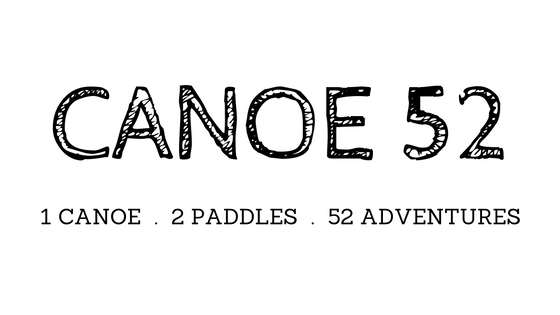Suddenly, we were awake on the second day of our 4-day trek down the Connecticut River. The day before we paddled from Enfield to Wethersfield. Today, we will travel the 23 miles to Hurd State Park in East Hampton. This stretch of the river is taxing in terms of stamina of the body and mind as you might have to fight the tide. The river winds through the valley past Rocky Hill, Cromwell, and Middletown to East Hampton where we were scheduled to spend the night.

The river shines like glass as we set out for day two.
Setting Out on the Connecticut River
On this day, in particular, it was important to leave as close to high tide as possible. Day two is a full-day paddle, a long trek. Timing your trip with the tides can help increase efficiency (See “Go with the Flow: Navigating a Tidal River” for more) and reduce your need to fight the tide. We based the entire trip on the high and low tide for the second day. Amanda and Tony figured that we would hit the water at high tide and drift down to East Hampton. If we were to do it again, we might schedule the trip so that we leave maybe an hour before high tide so that the tide carries us all the way to Hurd instead of working against it for the last hour. It’s easier to fight the tide in the morning when you are fresh, but more on that later.
Since it rained the night before, we started the day by wrapping up our wet tent and starting a fire for breakfast. Overnight, we stored firewood under the canoe to keep it dry and it quickly ignited. For breakfast, we planned three days of Campfire Egg Wraps. These are especially easy because all of the prep occurs at home. Once the fire’s started, just throw them on a grate and rotate to cook evenly. Once finished, unwrap the foil and enjoy. The foil is especially good at keeping the wraps warm until your ready to eat. Let me tell you, this was a welcome meal. The eggs were hot and the cheese melted. It goes back real easy.

Tony and Amanda are off to a great start after a hot egg wrap.
Connecting Our Communities
Our canoe was in the water and we were on our way by quarter after six that morning. The water was like glass and, as usual, we were out there alone. There was a light fog lifting as the sun broke through the trees. Blue Heron perched in the shallows hoping for a score. The water crinkled as our paddles broke the surface propelling our canoe south. The first noticeable community in this stretch of the river is Rocky Hill where the oldest continuously operating ferry carries cars to and from Glastonbury on the eastern bank. The next 10 miles is mostly tree-lined river valley until we stopped at Gildersleeve Island for a quick snack and a break from paddling. We were just north of Middletown and the last several miles of this journey, we knew, would be the most difficult.
Coming around the bend towards the Middletown/Portland area is quite nice. The river is wide, but finally seeing a community is reassuring. It is ten bends in the river between Crowe Point and Hurd. After about 4, we lost count. As we came around each corner, I was hopeful to see some buildings as a contrast to the monotonous green expanse of the river. Finally, the Arrigoni Bridge appeared on the horizon. The sky was clear and the heat was bearable. Middletown, the home to Wesleyan University and a once bustling port community, is situated on the western bank of the river. South of the bridge is where you begin to see more and more life on the river. Motorized vessels tool through the deep waters and communities more clearly embrace access to the river.

The Arrigoni Bridge, opened in 1938, has the longest span of any bridge in the state.
Fight the Tide
We decided to stop for lunch just south of the Portland Marina. It was low tide. As we set out again, it was noticeably more slow moving. Soon we were faced with an ominous docking station looming over us like the Cliffs of Mordor. The structure was donned with the logo for Pratt & Whitney. We had to fight the tide as we made our way towards the eastern bank, well away from what looked like a dock to siphon fuel to feed Pratt & Whitney’s aerospace plant. The waters were becoming increasingly choppy. We weren’t sure if it is in operation, but the structure was daunting, especially since wind and waves were picking up. Just past this was a beach full of people at Dart Island State Park. From our perspective, the beachcombers watched as we fought the choppy waters. The waves sometimes breaking over the hull.
The final stretch towards our campsite at Hurd State Park was tough. After more than 40 miles of paddling in two days, the choppy waters began throwing our bow in the air. This part is fun, but the hull slamming back on the surface of the water is taxing. The best thing to do in this situation is to keep your bow head on with the waves and make measured progress. Also, the closer you can be to the shore, the more efficiently you can navigate. As we approached our campsite, the higher waters made the entrance to the campsite difficult. Amanda had to jump out to tie off the boat before we were able to unload the canoe and set up camp. This night, however, did not predict rain, so we were happy to enjoy the evening and rest up from today’s paddle.

Our expansive campsite at Hurd State Park.




